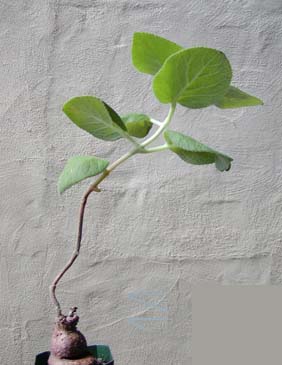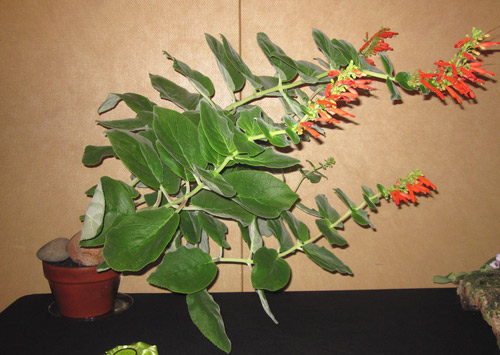Sinningia bulbosa
Habit and Tuber
I have several plants of this species, all grown from seed, but none has ever even had flowerbuds. The stems usually remain on the plant all winter.
The tubers are interesting. See a picture of one oddball.
Sinningia bulbosa is one of the "Galea Group", a cluster of closely related species which all have flowers with an overhanging upper lip, formed by the two uppermost corolla lobes.

